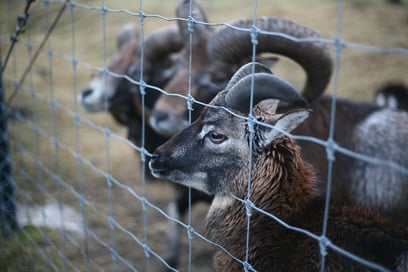High Tensile Wire: Thinner is Stronger
A fixed knot fence is effective on challenging terrain and remains rigid between posts. The .64% carbon content steel wire used in a fixed knot fence is noticeably thinner. However, strong as it is, this high tensile wire would be lost without a protective coating. This is why the requisite Class 3 galvanization, with its anti-corrosion properties, is added to offset steel's natural disintegration which enhances its cost-efficiency by delaying repair and replacement. High tensile wire is the choice when a long term fence solution is required as it remains a strong, versatile answer to a variety of fencing needs. .
Benefits:
- Lighter in weight, but stronger (thanks to its tensile strength)
- Won't sag; stays put
- Less need of tensioning
- Smaller gauge/diameter of the wire is more efficient (especially compared to heavier low carbon wire)
- Though stiffer, ultimately, installation is easier because it doesn't have to be stretched as hard as low tensile wire; tension it and it's ready to go
- Fewer posts are needed thanks to its strength and vertical stay wires
- Springs back with animal impacts; it has give, but retains its shape
Now, low carbon steel wire is easy to work with as well, (also known as mild steel) but it is prone to sagging, stretching and breaking more easily than high carbon-content steel wire. The carbon content for low tensile wire is roughly .28%; while this type of fence is common, it remains a shorter term answer.
Take a look:
As you'll see toward the end of this video, four wires with a similar gauge have very different breaking strength based on the carbon content:
And, very importantly:
Here's a comprehensive how-to from Bekaert that details the installation of a fixed knot fence:


























